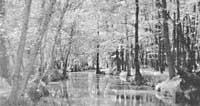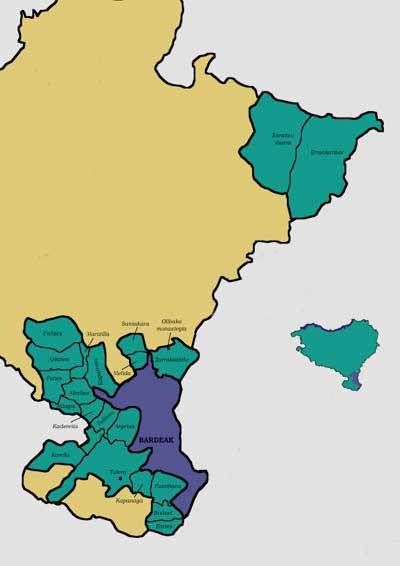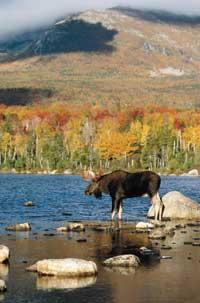Bardenas in the middle of the counteraddition
2001/04/29 Mendiburu, Joana - Elhuyar Zientziaren Komunikazioa
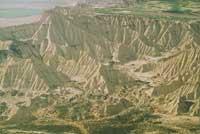
But well, the protected space that lately goes from word to mouth are the Bardenas, because on the one hand, UNESCO will end up granting the title of biosphere reserve and on the other, because the controversy over the range is at its peak. Knowing this unique space well and knowing the point of view of many people, each draws its conclusions.
Although he has never been in the bardenas, he links several words with this area: European desert, spectacular landscapes, dry area of Navarre, natural park, shooting area... In this long list, starting in May, we must add the biosphere reserve title granted by UNESCO. And although many of its inhabitants have shown their opposition, they will still be shooting range. But let's not confuse everything and start from the beginning.
The Bardenas are a dry area of 41,850 hectares that occupies the lands of Navarre and Aragon. Located between the rivers Aragon and Ebro, it makes scarce and irregular rainfall. In winter temperatures are low and very high in summer and strong winds accentuate evaporation.
The bardenas are distributed between the Bardena Blanca and the Negro. The Bardenas Blancas, located in the center, have a whitish color due to the paint and plaster and a relatively reduced vegetation. Erosion has generated spectacular landscapes of unique plains and peaks. In the Bardena Negra predominates red clay and limestone on the south side and vegetation is much more abundant. Two other zones with their own entity are Landazuria and the Bardenas plain.
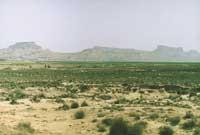
Human influence is also remarkable, especially in the landscape, since of the 42,000 ha approximately 54% are destined to agriculture. According to Alejandro Urmeneta, biologist of the Natural Park, "in more than 90% of the intensive plots, cereal is sown every two years instead of sowing annually, so it can be said that there is extensive agriculture". The other main use is extensive cattle breeding. Consequently, the extent of the vegetation of the Bardenas has been limited to areas of difficult laboreo, large gullies.
Most local plants have adapted the cycle to rainfall in spring and autumn. Its vegetation consists mainly of plantations of romeros and thyme and esparto. The pine forests are mainly found on the legs surrounding the Bardena Negra.
The zoological community, adapted to this vegetation, is not very rich, but they are of great natural interest. The most abundant mammals are rabbits, foxes and wild boars. As for the birds, you can find, for example, the woodpecker, the chorizo pispoleta, the fin, the royal eagle, the lemonade, the hawk, the mottled mozolo and the black cimarron, all of them protected by legislation.
Finally, the quality of the landscapes of the Bardenas should be highlighted from a geological point of view. Since there are no other areas of this nature further north of Navarre, it is an area of great value observed from Central Europe.
Due to its unique fauna and flora, it is easy to understand the adoption of conservation measures for this unique habitat and biological resource. This territory will receive in 1999 the declaration of natural park and the title of biosphere reserve granted by UNESCO in May.
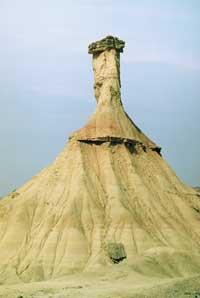
The functions of declaring 39,263 hectares of Parque Natural de las Bardenas corresponded to the Community of the Bardenas, who developed a plan for natural resource management and sent it to the Government of Navarra. This is how the Bardenas Natural Park was born in 1999. This designation aims to protect a good example of the steppes of northern Spain and the central valley of the Ebro. It is also intended to protect the vegetation of these steppes, since most plant species are priority in the European classification. It is also intended to protect steppe fauna and raptors populations.
In May, UNESCO will grant it the title of Biosphere Reserve, which it grants in accordance with the natural values and needs and uses of human beings. The title is given to areas with sustainable uses that can serve as an example for other areas.
The role of protected area managers is often to take appropriate measures to ensure nature conservation, but they are often too harsh for some and too flexible for others. It is the starting point of most criticism.
Objectives and criticisms

In the words of the biologist of the Natural Park, one of the objectives pursued with the management of this space is “to be able to combine all the uses simultaneously and appropriately. Agriculture, hunting, fishing, tourism, wind energy, solar energy and the range that was launched in 1951."On the other hand, at the end of the 80's and the beginning of the 90's, and more now with new protection figures, both in the management of the area and in the activities carried out in it, is intended to promote the conservation of nature. Among other things, in line with European agricultural policy, this action is intended to increasingly take conservation into account. In
the words of Iñigo Petri, of the Gurelur association, with the new appointment "the majority demand of the Navarra population has not been altered, but it has been renewed, because we want the shooting area and Eguaras to be integrated into the natural park". However, Petri believes that it must be clear that the problem of the military should not cover the rest of the problems. "We have to put limits on livestock, hunting and tourism that has grown a lot so that the Bardenas are properly preserved."
The Bardenas have given much to talk about and, apparently, remain witnesses to many polemics. Saying how everything will end is not easy, but in the long history of the Bardenas do not forget the following two quotes: this month UNESCO will give you the title of biosphere reserve and in June the rent of the shooting area will end.
From one hand to anotherLocated in the southeast of Navarre, the Bardenas have a unique historical, legal and administrative management, due to their long history. From the 10th century to 1512 the Bardenas were in the hands of the kings of Navarre. The surrounding villages paid the king to use the lands of the Bardenas, among other things for agriculture, livestock grazing, hunting and timber extraction. In 1512 the Bardenas passed into the hands of the king of Castile and continued with the land uses according to the concessions. In 1705, the kings sold the land use rights to 12,000 pesos to the surrounding villages and since then, exclusively and forever, the use of the Bardenas is in the hands of the so-called community of the Bardenas formed by 19 villages in the area. The Since then the contract has been renewed again and again, although the noise pollution it generates has caused its inhabitants to position themselves against. In 1989 the Government of Navarre declared 39,263 hectares of natural parks in the Bardenas in May 2001, UNESCO will grant the title of Biosphere Reserve to the Bardenas. In June 2001 the Ministry of Defense finalized the rental of the land where the range is located. |
Published in the supplement Natura de Gara.

Gai honi buruzko eduki gehiago
Elhuyarrek garatutako teknologia




